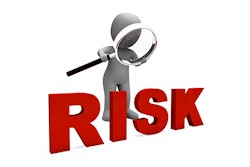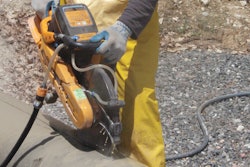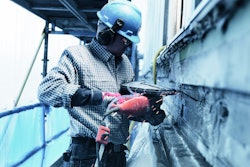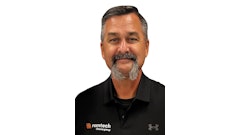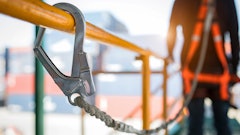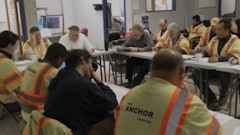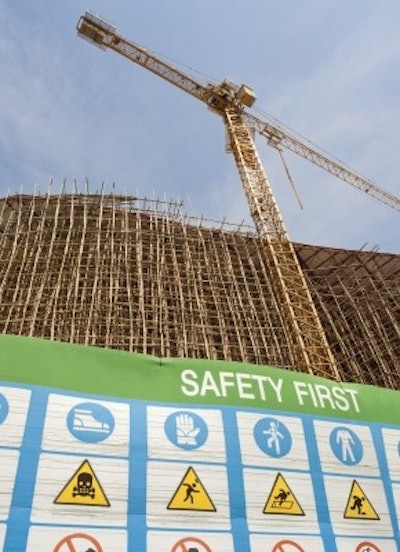
Did you hear the one about the guy who was in his bed when suddenly his bedroom disappeared into a big sinkhole? They still can’t find him!
Unfortunately this is not the opening line of a joke…it happened to an unfortunate man in Florida. Talk about a bad night’s sleep. What a sad nightmare!
While we may work very hard in preventing the more obvious safety incidents for our projects, how do you discern the “safety sinkhole” just awaiting you and your crews? Well, nothing is 100% fool proof, yet we must continue to find preventive measures that will lower our risk for minor safety incidents to the most unbelievable disasters. To defend against both extremes takes focus, concentration and confidence to do the right thing.
I want to take a more hands-on direction by providing some solid, and in some cases bold, steps to protect your workers, protect those working or traveling through or near your work areas, and limit as much potential legal fall-out possible. Nothing is foolproof, but I think we can probably all stand to be a bit more assertive in taking the extra step to creating a Safety First reality.
Spend more time assessing safety questions for every project
Projects that are in high-traffic areas, that are highly visible and that are just higher in dollar value are all more likely to receive a bit of extra safety scrutiny. Yet, it’s sometimes the job that was the “no brainer” for us to complete. You know, the one that was in our “sweet spot” that received the least amount of pre-start assessment and therefore provided the greatest potential for actual risk. With margins tighter than ever this is no time to sacrifice the extra preparation and assessment of projects.
Every question possible should be raised. In fact, it’s not a bad idea to include a few of the following questions that many contractors and field leaders have adopted in their quest to prevent “safety sinkholes.”
- What’s in the immediate project area that poses a safety risk?
- What will be the needed traffic patterns for our vehicles, material/supplier deliveries, customer needs, etc.?
- Where are the closest power sources located, and what are we doing to protect those working around such sources?
- What safety standards will we need to require?
- What safety education will be provided to our workers, our subcontractors (if any), touring customers, consultants, engineers, etc.?
- What Personal Protective Equipment (PPE) will be required…by everyone on the jobsite?
- What signage for potential “safety sinkholes” is marked both on every drawing and on the jobsite? (Tip: Use same color for marking up drawings as used on jobsite signage.)
- What additional posting of safety “guards” will be assigned to areas in the critical zones of the project?
- What safety focus is present on the areas surrounding our project site? (Poor safety considerations from the project’s “next door neighbor” may contribute to a safety risk for you.)
- What are the safest and fastest exit routes in the event of a safety incident? Closest hospitals? Closest fire department and police station?
These 10 questions provide you with ample things to consider, but don’t stop here. Let the 10 questions above seed your own effort to take a much closer look at more specific safety questions for your company to consider.
Consider the financial and legal risks associated with each project
For the larger contractor who has learned from past slip-ups or oversight related to lax safety practices, many of the same contractors have tightened their belt related to preparing for the worst. In effect, the old saying, “Prepare for the worst; hope for the best,” is applicable to a degree. But we can move a bit past just hoping for the best safety results by being more aggressive at assessing our work areas.
While most contractors, large and small, have found it difficult to turn work away due to our challenging economic state, it still pays — literally — to take an extra look at what you are bidding. Consider a few questions that might assist you in this area of action.
- Is this job totally out of the scope of what we’ve ever accomplished in the past?
- If we have completed work similar in scope before how did we fare in safety, quality, profitability, performance, etc.?
- Due to the potential serious concerns on the project, are we insured for the risk potential that we’ve assessed?
- If we are concerned about potential risks, have we consulted with our legal experts that can point out what our consequences can be if the worst happens?
- What do some of our most trusted field leaders have to say about the potential risks identified? (Use that knowledge and experience; that’s what you pay them for!)
- Are you tempted because of the notoriety of the project? (In the end, don’t give in to your leaders or your ego just because of the size of the project or the visibility or the enhanced resume potential. If the job is too good to be true…it probably is!)
- Discuss high-risk efforts with the client to determine financial consequences for worst case scenario. (It’s a good idea to bring the client into the reality of sharing financial risk or increasing fees for high risk construction action.)
- Are there industry experts you can contract to perform high risk portions of the project?
Discuss, plan, simulate and seek expert advice for potential sinkhole constructability issues
Portions of the above considerations are embedded here in this third suggestion. However, it is vitally critical to a successful project that the team that will be executing the riskier projects be provided quality time to discuss each and every potential risk and preventive action.
Likewise, the same team should spend time planning out the proper and necessary steps to prevent a sinkhole experience. If the resources can be gathered, and if there’s a possible simulation for a perceived sinkhole experience, then be sure to rehearse how the crew plans on executing the needed tasks. Perhaps a change in your procedure is all that it might take to prevent something negative happening for both the crew and the project.
Finally, there is absolutely nothing dumb about asking some “dumb” questions of a recognized expert in the task or procedure your company has deemed high risk. This effort may indeed cost you, but the investment spent asking may prevent an even larger cost should the sinkhole suck you in.
Construction experts in the area of risk management tell me that a great majority of accidents that take place are avoidable. How? Here’s what I have collected from a few experts in risk management who are hired to provide a little “CSI-like” investigative work for companies across the country. Here are their “Top 5” reasons:
- Contractor performed work that is out of their scope of capabilities
- Contractor did not prepare properly for the amount and type of safety resources to prevent “sinkhole”
- Contractor pushed crews to get work completed fast
- Construction workers weren’t properly educated on high-risk areas and work efforts
- Contractor had the wrong (inexperienced) people performing the work; better workers were available but on other jobs
Now, admittedly, we’ll always have that job or two during our year that we could not have prepared for completely. Yet if we did have a culture that truly put Safety First there might be more habits formed to address every project with more open eyes by more people associated with the project.
One construction risk consultant shared with me that in most of the cases that he’s investigated the common thread appears to be lack of clear and strong leadership. Did you get that? That’s us…the senior leaders of our companies not paying enough attention to what our crews are doing.
If any contractor was asked whether safety is very important in the company, of course the response would be that “safety is first!” But Safety First is best seen and practiced, and that begins with asking the right questions about preparation, set-up, execution, and the tools and equipment necessary to perform in a safer manner.
Don’t be slow about demanding more Safety First thinking and leading that effort personally. You don’t want to have anyone in your organization fall into a sinkhole!




